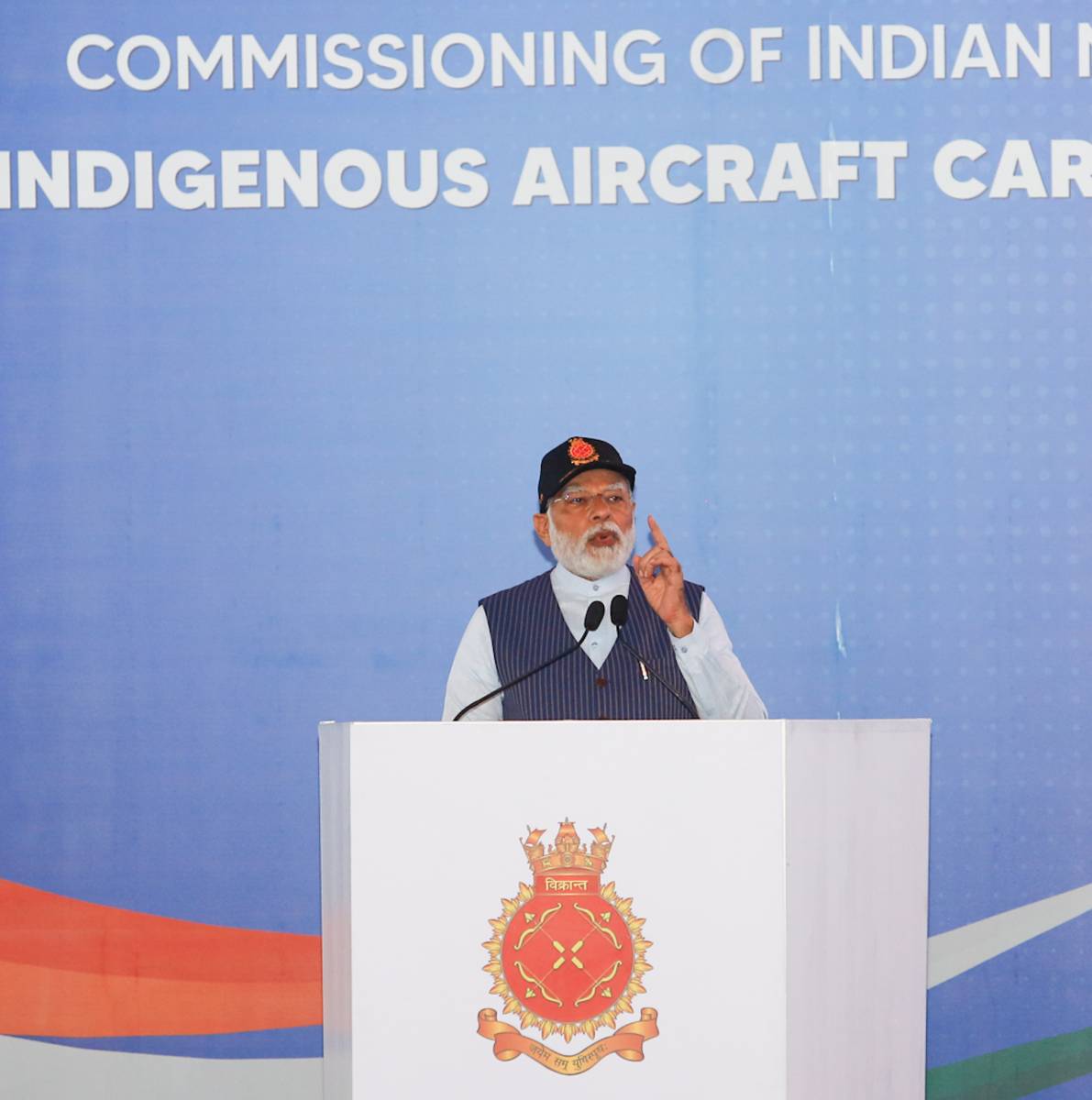Modi also unveiled the new Naval Ensign, doing away with the colonial past and befitting the rich Indian maritime heritage…reports Asian Lite News
Prime Minister Narendra Modi on Friday commissioned the INS Vikrant, India’s first indigenously-built aircraft carrier, at the Cochin Shipyard Limited.
After the unveiling, the Prime Minister said India has now joined the select club of nations who have developed indigenous aircraft carriers.
Addressing the commissioning ceremony, Modi said: “INS Vikrant is a floating airfield, a floating town… and the power generated in it can light up 5,000 houses, while the cables can run to Kashi from Kochi.”
He said that the carrier’s deck is the size of two football fields and its an example of the government’s aim to make India self-reliant even in the defence sector.
The Prime Minister said that despite the security of the Indo-Pacific region is “our priority, but in the past it was ignored”.
Modi also unveiled the new Naval Ensign, doing away with the colonial past and befitting the rich Indian maritime heritage.
“Indian Naval flags carried a sign of slavery which has been replaced with a new one inspired by Chhatrapati Shivaji Maharaj… The new Naval Ensign draws inspiration from the seal of great Indian emperor Chhatrapati Shivaji Maharaj. It depicts steadfastness, the octagonal shape represents the eight directions symbolising the Navy’s multi-directional reach,” he added.
Designed by the Indian Navy’s in-house Warship Design Bureau (WDB) and built by Cochin Shipyard Limited, a Public Sector Shipyard under the Union Ministry of Ports, Shipping and Waterways, INS Vikrant has been built with state-of-the-art automation features and is the largest ship ever built in the country’s maritime history.
The indigenous carrier is named after its illustrious predecessor which had played a vital role in the 1971 war.
Seventy-five per cent of the material used for its construction has been sourced indigenously. According to reports, the 262-metre-long carrier has a full displacement of close to 45,000 tonnes and is powered by four gas turbines totaling 88 MW power and has a maximum speed of 28 knots.
The carrier is built at an overall cost of nearly Rs 20,000 crore. Its keel was laid in 2009.
Capable of carrying a component of 30 aircraft, fighters and helicopters combined, INS Vikrant — which is 262.5 m long and 62.5 m wide — has a top speed of 28 knots (approx. 52 kmph) and a cruise speed of 18 knots (approx. 33 kmph).
Its STOBAR (short take-off and arrested landing) systems will ensure that the Mig-29K aircraft can come to a stop from 250 to 0 kmph on board in less than 90 metres and within two seconds.
In addition to the fighters and helicopters, and its own battle group that sails with it, INS Vikrant is equipped with 32 Medium Range Surface to Air Missile (MRSAM), the AK-630 fully automatic naval rotary cannon close-in weapon system and stabilised remote-controlled guns (SRCG).
The MRSAM, along with the MF-Star radar, would be integrated into INS Vikrant next year by when it will be fully operational.
Vikrant’s eyes and ears comprise RAN-40L 3D air surveillance radar, DRDO-developed Shakti Electronic Warfare suite that will provide an electronic layer of defence against modern radars and anti-ship missiles, and the Rezislor-E Aviation Complex, besides other systems and radars.
ALSO READ-INS Vikrant will cement India’s Indo-Pacific thrust

Leave a Reply